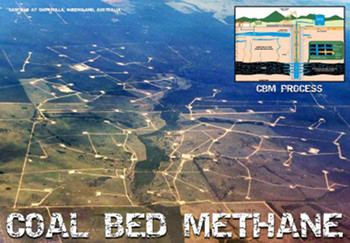
Extreme Energy
Fracking is just a symptom of a much wider problem. As easier to extract energy resources are exhausted by the unsustainable energy consumption of the present system, we are resorting to ever more extreme methods of energy extraction. Over the last century the exploitation of fossil fuels has moved from tunnel mining for coal and drilling shallow oil wells to tearing apart whole mountains and drilling in a mile or more deep of ocean.
As existing energy resources deplete the default response has been to just been to try harder. Dig or drill deeper, go after lower quality resources or move on to more remote location. This increasing effort has consequences: increasing pollution, more dangerous working conditions, greater greenhouse gas emissions, more land use and less resources available to other sectors of society.
At present we are on a course which leads towards a world dominated by energy extraction, one where most of the energy produced is used to run the extraction processes while people live and die in its toxic shadow. The present system’s addiction to massive amounts of energy is driving this headlong rush towards oblivion and unless something is done to stop it we will all be dragged down into hell with it.
Tar Sands, Mountain Top Removal, Deep Water Drilling, Biofuels and Fracking are all symptoms of this scramble to suck the last and most difficult to reach drops out of our planet. Even more extreme extraction methods are being contemplated such as Oil Shale and Methane Hydrates, while existing methods are slowly growing more extreme as easiest to extract resources are depleted.
Coal Bed Methane (CBM)
See this amazing summary http://www.fraw.org.uk/publications/e-series/e11/e11c-fracking_and_coalbed_methane.pdf , Available for printing in our Resources section
Coal Bed Methane is methane (natural gas) trapped in coal seams underground. To extract the gas, after drilling into the seam, it is necessary to pump large amounts of water out of the coal seam to lower the pressure. It is often also necessary to frack the seam to extract the gas. There are a similar catalogue of negative environmental and social effects as with Shale Gas. This includes methane migration, toxic water contamination, air pollution, increased carbon emissions and a general industrialisation of the countryside. Impacts that are specific to CBM include depletion of the water table and potentially subsidence.
In common with other unconventional gas extraction, such as Shale Gas, CBM wells do not produce large amounts of gas per well and production declines very quickly. It is therefore necessary to drill large numbers of wells, covering a huge swaths of the landscape. CBM exploitation began in the US and over 55,000 CBM well have been drilled in the last decade or so, mostly in the western states (Colorado, New Mexico and Wyoming in particular). In Australia, where it is know as Coal Seam Gas (CSG), over 5,000 CBM wells have been drilled in Queensland in the last few years and the industry is aggressively expanding into New South Wales. In the UK CBM is more advanced than Shale Gas and full scale production may begin soon.
Thanks to http://frack-off.org.uk/fracking-hell/ for this description.

Recent Comments